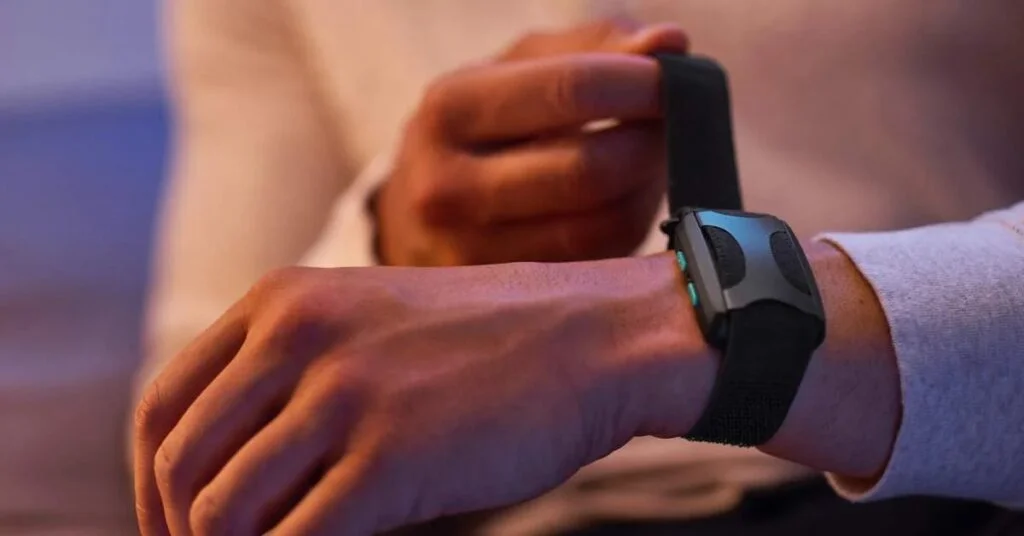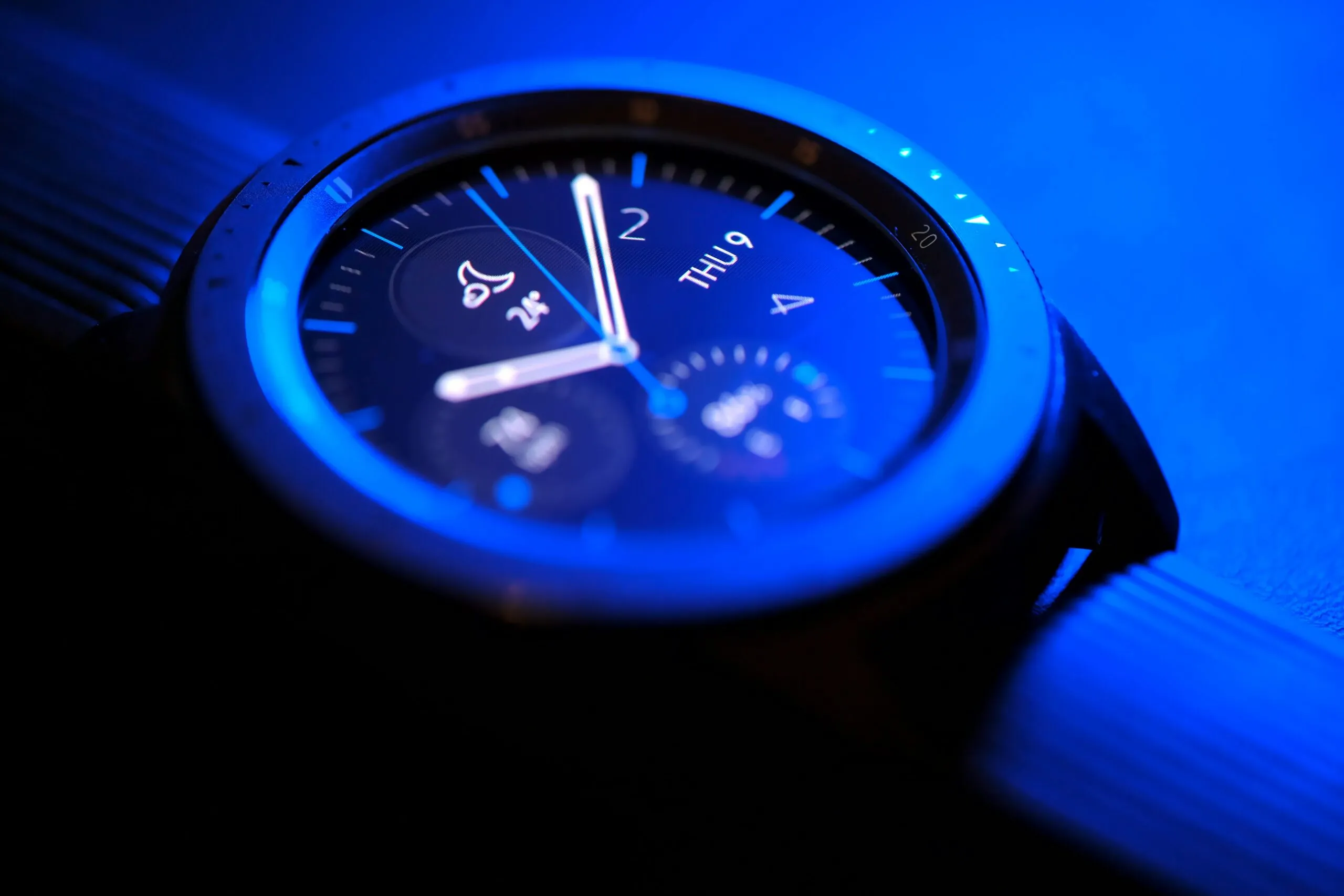Introduction to Wearable Stress Management Devices

In today’s fast-paced world, stress has become an all-too-common experience for many individuals. The pressures of modern life, including work demands, personal obligations, and the constant connectivity offered by technology, can lead to elevated stress levels. As stress can have detrimental impacts on both mental and physical health, finding effective ways to monitor and manage it has never been more critical. This need has facilitated the rise of wearable devices specifically designed to track and manage stress levels.
Wearable devices for stress management have gained popularity due to their ability to provide real-time data and insights regarding an individual’s physiological responses to stressors. These devices, which often include features such as heart rate monitoring, sleep tracking, and guided breathing exercises, empower users to gain a better understanding of their stress triggers. By doing so, individuals can take proactive steps toward fostering better mental well-being and implementing stress-relief techniques into their daily routines.
Technological advancements have played a significant role in the evolution of these devices. Innovation in sensor technology and data analytics allows for a more accurate assessment of physiological signals associated with stress. Wearable gadgets, such as smartwatches and fitness trackers, are now equipped with sophisticated capabilities that can analyze heart rate variability, which is a key indicator of stress levels. Moreover, some devices offer personalized recommendations based on the data they collect, further enhancing the user’s ability to manage stress effectively.
As we navigate through numerous options, it will be essential to explore various wearable devices designed specifically for stress management. These devices not only aim to help individuals monitor their stress levels but also provide tools to mitigate the impact of stress through mindfulness practices, ensuring individuals can lead healthier, more balanced lives.
Top Wearable Devices for Monitoring Stress Levels
The increasing awareness surrounding mental health and stress management has led to the development of various wearable devices that facilitate the monitoring of stress levels. These devices utilize advanced technologies to provide users with real-time data regarding their physiological states, offering insights into stress triggers and overall well-being.
One of the predominant categories of wearable devices is smartwatches. Brands such as Apple and Samsung have incorporated features that monitor heart rate variability (HRV), a key indicator of stress levels. By analyzing changes in heart rate patterns, these smartwatches can alert users to elevated stress and prompt them to engage in mindfulness activities, such as guided breathing exercises. The user-friendly interfaces of these devices make them accessible for everyday use, promoting proactive stress management.
Fitness trackers, like those from Fitbit and Garmin, provide another effective avenue for stress management. Many models offer features designed to track sleep quality, physical activity, and stress-related metrics. Utilizing algorithms, these trackers evaluate body responses to stressors throughout the day, thus enabling users to identify periods of heightened tension. By examining trends over time, individuals can adapt their routines to minimize stress accumulation.
Moreover, specialized health monitors have emerged as effective tools for stress management. Devices such as the Muse headband provide users with biofeedback related to brain activity during meditation or relaxation sessions. This real-time feedback helps individuals hone their mindfulness practices, leading to greater stress reduction. Innovations in this domain further include sensors that can detect alterations in skin temperature and galvanic skin response, providing a comprehensive view of stress physiology.
In summary, wearable devices for stress management offer diverse functionalities that cater to various user needs. By empowering individuals with actionable insights into their stress levels, these technologies enhance the ability to manage stress effectively in everyday life.
Key Features to Look for in Stress Management Wearables
When selecting wearable devices designed for stress management, several essential features should be prioritized to ensure effectiveness and usability. One of the most critical features is heart rate variability (HRV) tracking. This measure indicates the autonomic nervous system’s response to stress, with higher variability often associated with better stress resilience. Devices that accurately monitor HRV can provide valuable insights into when an individual is experiencing heightened stress levels, enabling timely self-management interventions.
An additional vital aspect to consider is the availability of guided breathing exercises. Many wearables integrate features that assist users in performing deep breathing techniques, which have been shown to reduce anxiety and promote relaxation. These exercises, often accompanied by visual or audio prompts, allow users to engage in mindfulness practices throughout the day, contributing to their overall stress management strategy.
Furthermore, sleep tracking capabilities should not be overlooked. Quality sleep is integral to managing stress effectively, as a well-rested individual is more equipped to handle daily challenges. Wearables that monitor sleep patterns can help users identify disturbances that may contribute to stress. Understanding how different factors, such as screen time or caffeine intake, affect sleep can empower users to make informed lifestyle adjustments.
The user interface of the wearable also plays a significant role in its appeal. A user-friendly interface can greatly enhance the experience, enabling individuals to navigate through features intuitively and access stress management tools effortlessly. Integration with mobile applications is another key feature that provides a seamless experience; users can track their metrics, access resources, and receive personalized recommendations based on their data. Therefore, ensuring that a chosen device offers these features is crucial for effective stress management.
Integrating Wearable Devices into Your Daily Routine
Incorporating wearable devices for stress management into daily life requires a thoughtful approach to ensure their effectiveness. Establishing a consistent routine is paramount, as it allows users to fully leverage the capabilities of their devices. First, consider setting daily reminders on your wearable device to engage in mindfulness exercises, deep breathing, or physical activities. These reminders can prompt users to take short breaks, especially during high-stress situations, ultimately contributing to better stress management.
Additionally, optimizing the usage of these devices during peak stress periods can significantly enhance their benefits. For instance, if you are facing an upcoming deadline or a challenging meeting, monitor your physiological responses through heart rate variance or stress alerts on your device. This real-time feedback can encourage you to implement coping strategies such as walking or meditating, thereby reducing tension effectively. By being proactive, users can harness the device’s capabilities to manage stress in real-time.
Another important aspect is utilizing the data analytics features provided by wearable stress management devices. Regularly reviewing tracked data enables users to identify patterns and triggers associated with stress. By analyzing this information, individuals can make informed decisions regarding lifestyle changes, such as adjusting sleeping schedules, improving diet, or prioritizing certain activities. This reflective practice can aid users in aligning their daily habits with long-term stress reduction goals.
Moreover, while technology plays a significant role in stress management, balancing its use with traditional mindfulness practices is essential. Activities like meditation, yoga, or simply spending time in nature should complement the functions of your device. By integrating both technology and mindful practices into your daily routine, you create a comprehensive approach to managing stress effectively and holistically.

